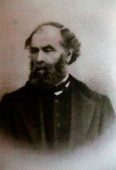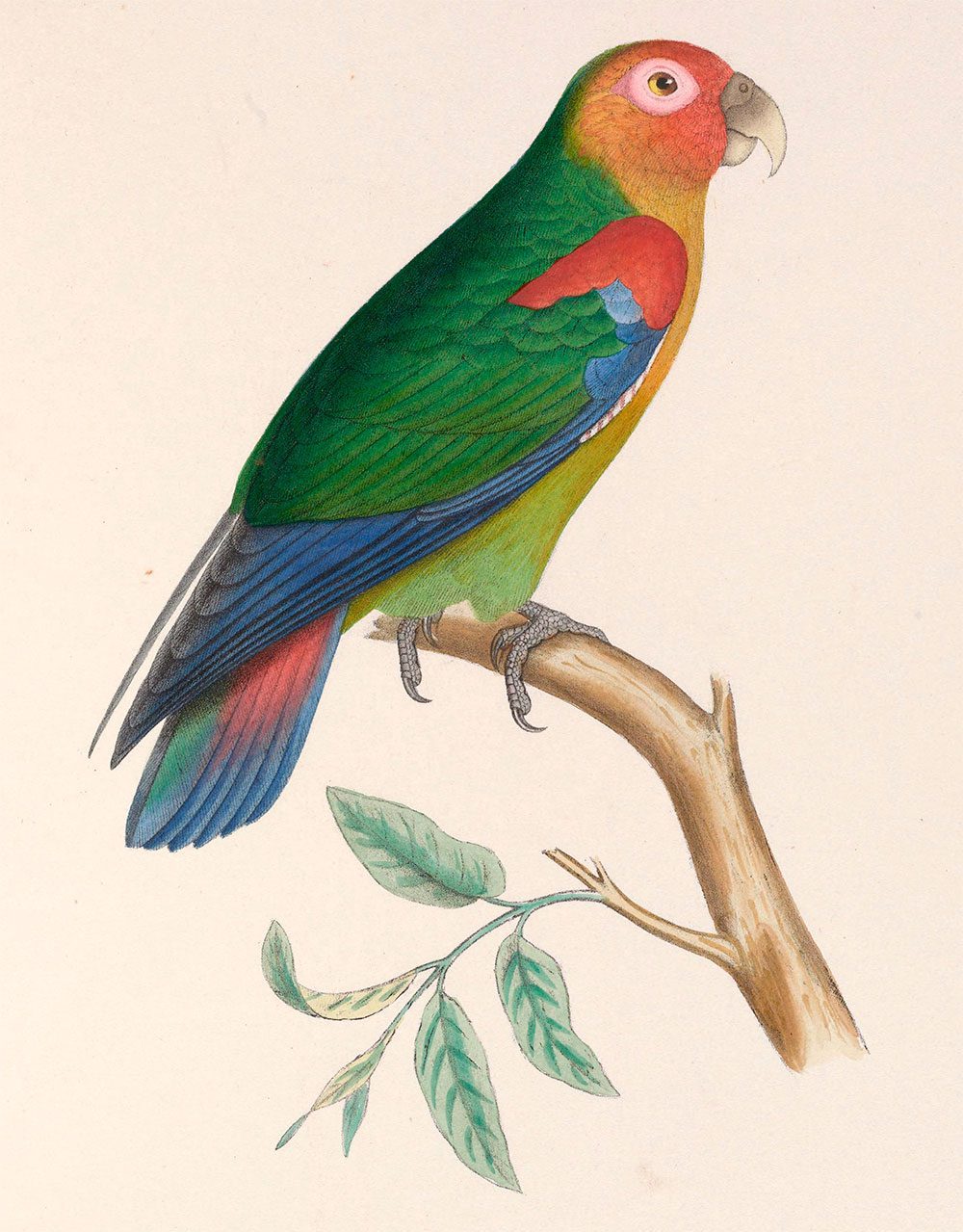Content
|
|---|
Description:
23 cm.. height and a weight between 97 and 115g.
The Rusty-faced Parrot or Parrot mountain (Hapalopsittaca amazonina) It is distinguishable by the dirty red of his face and crown. Its bill is pale with to the base of the lower jaw and the chin of color red orange. Headphones coverts reddish brown with yellow lines that extend behind the nape and the neck. The rest of upperparts they are green. Its chest This is olive green, with red spots in the shoulders similar to their Wing coverts internal minors. The rest of your wing-coverts they are blue-green and the remiges bluish-black. Its tail It is mainly dull red with wide blue apexes.
It has no sexual dimorphism. The youth are green-yellow color, with the face pale red and the secondaries grey.
- Sound of the Rusty-faced Parrot.
Description 3 subspecies:
-
Hapalopsittaca amazonina amazonina
(Des Murs, 1845) – Nominal.
-
Hapalopsittaca amazonina theresae
(Hellmayr, 1915) – The plumage with more olive tones and the face dark red.
-
Hapalopsittaca amazonina velezi
(Serious,GR & Restrepo, 1989) – With part of the crown and nape, brighter yellowish green; forecrown red; list fine near to the ear; below and behind the eye, green. More information.
Habitat:
It inhabits in mountains with semi-humid and cloud forests, between the 2000 to 3600 m, with the presence of Oak (Quercus humboldtii) and Alder (Alnus acuminata).
Fly high in the forest canopy, in groups of 5-30 individuals. Presents aggregation behaviors for the night, establishing communal bedrooms in groups of between 2-35 individuals.
Reproduction:
Many aspects of the reproductive biology of the Rusty-faced Parrot. Probably nests in tree hollows of Oak dead.
Food:
Consumes fruits of the “matapalo“, flowers and seeds, including the of Clusia sp. and some GUIs of which is fed with high frequency.
Distribution:
Size of the breeding range / resident): 234.000 km2
Is located in Colombia and Venezuela and Peru. In Colombia lives between 2000 and 2700 m above the sea level in the Cordillera Oriental and in the The upper Magdalena valley (South of the Department of the Huila). Among 3100 and 3600 m of height in the cordillera Central in Caldas (where it is considered Bird emblem), in the basin of the White River in the municipality of Manizales. In the Cordillera Oriental is known only in Norte de Santander and the southwest of Bogotá. Has also been recorded in the departments of Risaralda, Tolima, Huila (Cave of the Guacharos, Meremberg nature reserve) and Cauca (Puracé National Park).
Distribution 3 subspecies:
-
Hapalopsittaca amazonina amazonina
(Des Murs, 1845) – Nominal. East of the Colombian Andes.
-
Hapalopsittaca amazonina theresae
(Hellmayr, 1915) – Eastern edge of the Andes of Colombia and Northwest of Venezuela.
-
Hapalopsittaca amazonina velezi
(Serious,GR & Restrepo, 1989) – Center of the Colombian Andes. More information.
Conservation:
• Current category of the Red List of the UICN: Vulnerable.
• Population trend: Decreasing.
From makes several years appears in the book red of species threatened by fault of the destruction of their habitat, including, the Palm of wax (Ceroxylon quindiuense).
Rationale for the Red List category
This species is classified as Vulnerable Since its small population consists of subpopulations very small and scattered that probably will be experiencing declines continuous due to the loss widespread of habitat.
Justification of the population
Renjifo et to the. (2002) estimated that in Colombia the population can count 2,500-10,000 individuals, based on a hypothetical C.1 density of individuals / km2, and the 25% occupation of the approximately 13.890 km2 of habitat suitable. This may be an overestimate and the population could be right around the few thousand mark in Colombia (P. Salaman in litt., 2005). There are also much smaller populations in Venezuela. Its location in the Ecuador is uncertain. Be placed better in the band 2.500-9.999 mature in general individuals, which is equivalent to 3.750-14.999 individuals, rounded here to 3.500-15.000 individuals.
Justification of trend
Se sospecha una lenta y continua disminución de la población del Rusty-faced Parrot sobre la base de la continua destrucción y fragmentación del hábitat.
"Rusty-faced Parrot" in captivity:
No encontrado en avicultura.
Alternative names:
– Rusty-faced Parrot, Bogota Parrot, Little Amazonian Parrot, Rusty faced Parrot (English).
– Caïque à face rousse, Caïque à face rouge (French).
– Caïque à face rousse (German).
– Rusty-faced Parrot (Portuguese).
– Cotorra Montañera, Lorito Amazonino, Lorito Multicolor, Loro fantasma (español).
– Cotorra Montañera, Lora montañera (Colombia).
– Perico Multicolor (Venezuela).
scientific classification:

– Order: Psittaciformes
– Family: Psittacidae
– Genus: Hapalopsittaca
– Scientific name: Hapalopsittaca amazonina
– Citation: (Des Murs, 1845)
– Protonimo: Psittacus amazoninus
- Form a superespecie with Hapalopsittaca fuertesi and Hapalopsittaca pyrrhops, together with which it has also been considered conspecific.
Images “Rusty-faced Parrot”:
Videos “Rusty-faced Parrot”:
“Rusty-faced Parrot” (Hapalopsittaca amazonina)
Sources:
Avibase
Parrots of the World – Forshaw Joseph M
Parrots A Guide to the Parrots of the World – Tony Juniper & Mike Parr
Birdlife
Photos:
(1) – Iconographie ornithologique By Marc Athanase Perfect Carnation Walls (1804-1878) (Iconographie ornithologique) [Public domain], via Wikimedia Commons
Sounds:

Daniel has been chasing birds since he was 9-years old, growing on a farm in the Central Andes of Colombia, with his bedroom walls covered with colorful prints of John James Audubon’s birds. Daniel graduated in Veterinary Medicine and Animal Science and has pursued bird and nature photography as his main passions in life.
He is co-founder of the Caldas Ornithological Society (SCO) based in Manizales. Dedicated mainly to conservation and sustainable development projects, Daniel has consulted for many of the most prominent environmental organizations in Colombia and currently assists private nature reserves in Colombia in the establishment of agritourism and ecotourism services.


